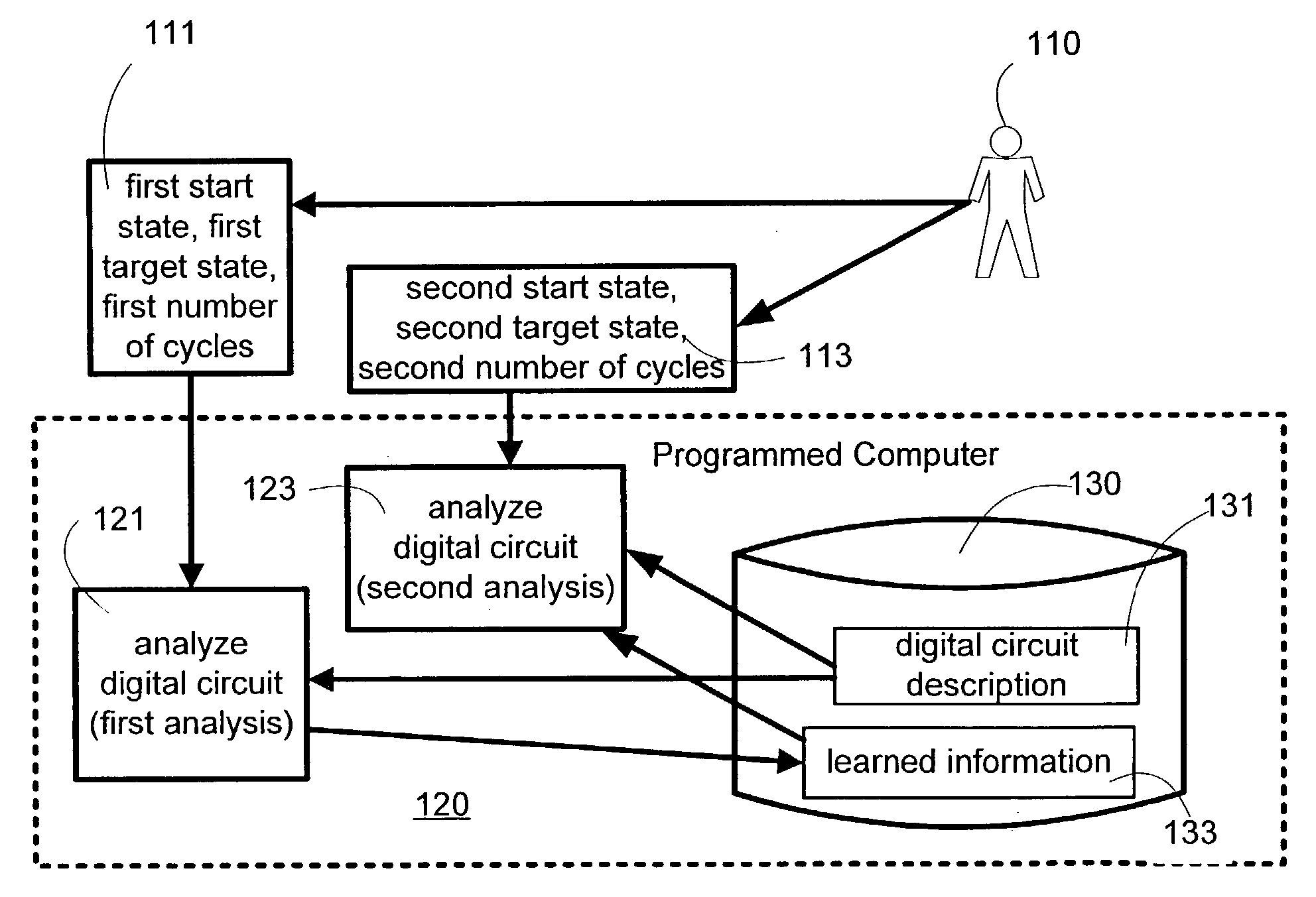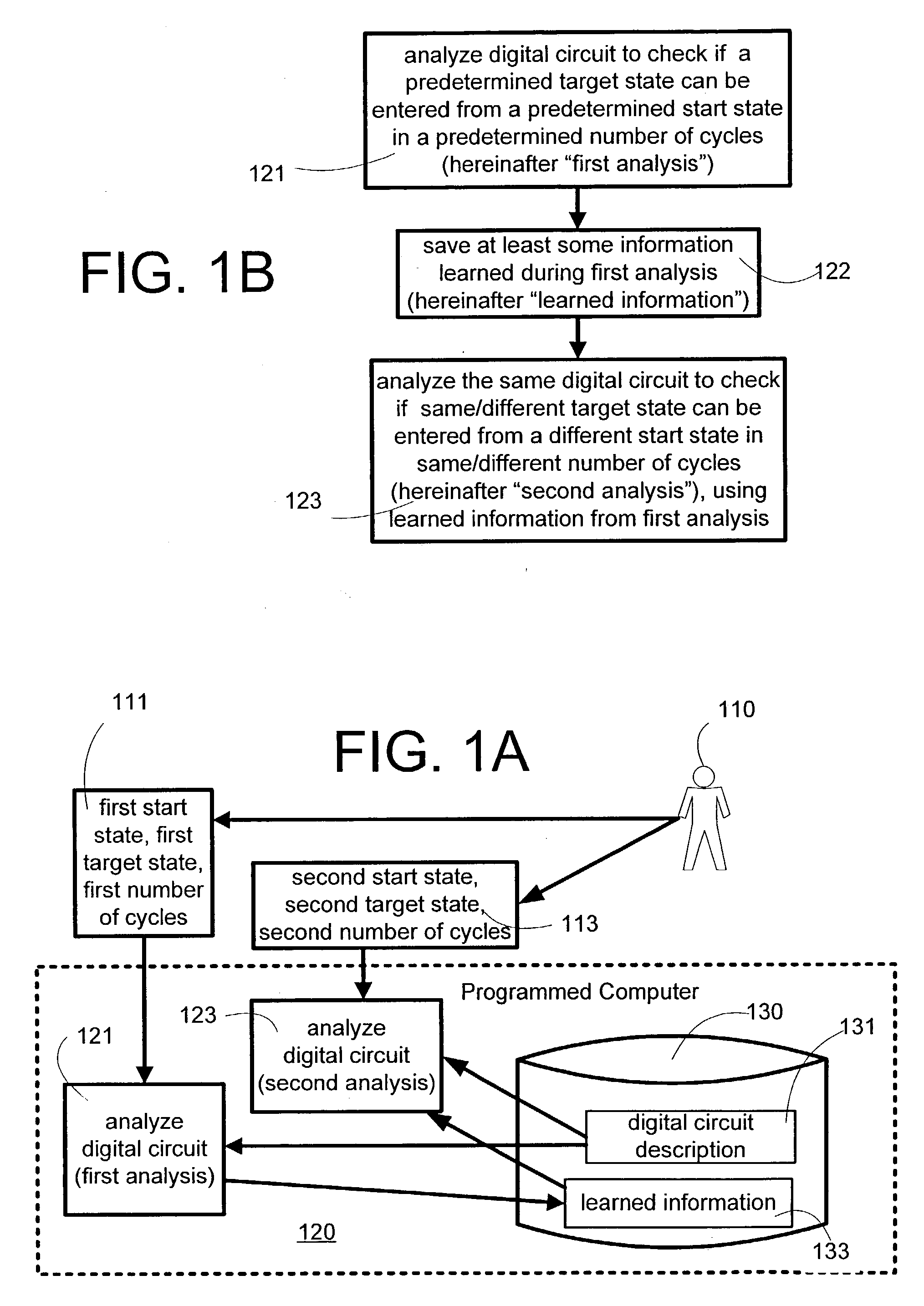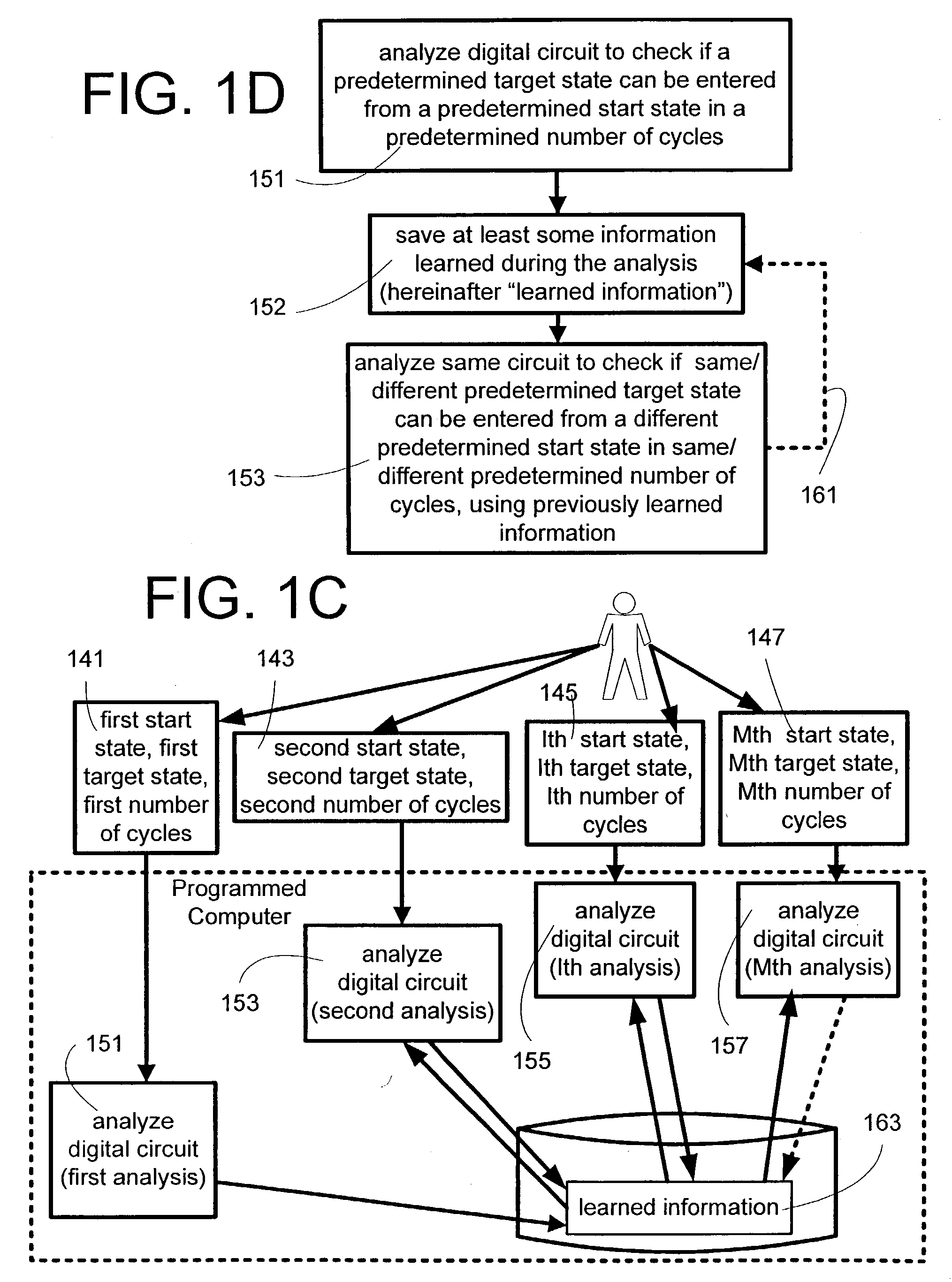Reuse of learned information to simplify functional verification of a digital circuit
a digital circuit and functional verification technology, applied in the field of reusing learned information to simplify the functional verification of a digital circuit, can solve the problems of large digital circuits, inability to achieve certain modes of operation of circuits within the range of analysis of existing bmc methods, and modern high-performance microprocessors which require substantial validation efforts. to achieve the effect of simplifying the analysis of the digital circui
- Summary
- Abstract
- Description
- Claims
- Application Information
AI Technical Summary
Benefits of technology
Problems solved by technology
Method used
Image
Examples
Embodiment Construction
[0043] In accordance with the invention, a computer is programmed to perform functional verification of a digital circuit by repeatedly analyzing a description of the circuit along with input data provided by the user, saving certain information (also called “learned information”) representing invariants learned during the analysis, and using the learned information during subsequent analyses.
[0044] In several embodiments, use of learned information as described herein enables the programmed computer to perform its subsequent analysis faster, at least by avoiding repetition of acts in a previous analysis that generated the learned information.
[0045] In several examples, the digital circuit that is described in a description to be analyzed by the programmed computer is a sequential digital circuit wherein one or more storage elements (such as registers) are intermixed with Boolean and / or arithmetic operators. In the case of a sequential digital circuit, several embodiments require ...
PUM
 Login to View More
Login to View More Abstract
Description
Claims
Application Information
 Login to View More
Login to View More - R&D
- Intellectual Property
- Life Sciences
- Materials
- Tech Scout
- Unparalleled Data Quality
- Higher Quality Content
- 60% Fewer Hallucinations
Browse by: Latest US Patents, China's latest patents, Technical Efficacy Thesaurus, Application Domain, Technology Topic, Popular Technical Reports.
© 2025 PatSnap. All rights reserved.Legal|Privacy policy|Modern Slavery Act Transparency Statement|Sitemap|About US| Contact US: help@patsnap.com



